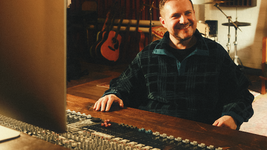Concrete Decisions: Should Historical Monuments Be Reconstructed?
- Issabella Orlando
- Nov 25, 2018
- 5 min read
The reconstruction of historical sites is such a regularly occurring practice that we seldom blink when they are scaffolded and taped off for restoration, and so common that we often forget to consider the question of whether returning sites and monuments to their ‘former glory’ is indeed the best way to deal with them. Like in any debate, there is a spectrum of different opinions and perspectives in response. Although they probe different ideas, each has its merit. Making a concrete decision about restoration is difficult, as it should be - for this implies to collectively think about the issue at hand, and more regularly consider cultural heritage as a whole.

Some are certain that the living are obligated to do more than only be caretakers of these remnants of the past. Beyond preservation, many support the idea that we should also reconstruct ancient sites to the best of our ability, using the available knowledge to do so as authentically as possible. Reconstruction can be undoubtedly positive, so long as it does not further damage original remains; it can aid us in envisioning the form that historical buildings and spaces took while they were in use, hundreds and thousands of years ago. This is difficult to do only in our minds - try to imagine the Coliseum as it would have stood in the days of Ancient Rome, a complete cylinder missing the iconic slope that indicates its decay over time. Filling in the missing components of a structure can serve as the physical equivalent of rebuilding an experience of the past that might otherwise be lost.
It is easy for academics, with many concerned with maintaining the ‘purity’ and authenticity of a site, to peer down their noses at modern supplements to ancient remains disapprovingly. However, when deciding whether or not to reconstruct, greatest accessibility should be a significant priority. This is the only way to prevent knowledge of and appreciation for history from becoming exclusive and uninviting. Reconstruction can be one of the most valuable mediums of learning and teaching, bridging the gap between those formally educated in history and those who hope to understand it a little better, even if just for a few hours.
Even if average viewers aren’t as acutely aware of what they are looking at as a scholar of archaeology might be, the ability to continue to engage with history through living memory and experience offers a sense of understanding far richer than that which could be taught in a book, or on a plaque. Historical spaces, turned tourist attractions, gleam not only thanks to the sheen of polished reconstructed additions, or to the potential economic benefits for the local community, but more thanks to the promise of continuity in future education. Although at times crowded and reminiscent of an amusement park, there is something undeniably valuable in heritage sites becoming places where people can visit and make new memories, or where artists can practice their craft in capturing remains in charcoal or ink; for individuals, to seek reelection in quiet moments, or for students to collaboratively use the physical relics to sketch a rough image of life before our time.
Perhaps when it comes to restoration, the answer lies in partially returning structures and artefacts, restoring a small fraction of a site, just enough to provide an example of what it would have looked like in its original state. More cost effective than erecting a whole structure, such a method would accommodate the display of remains that are mostly untouched by modern intervention. The simple interference of stacking one or two columns upright again may make a world of a difference in a viewer’s imagination, transforming the rubble into something real. Another answer may lie in the rapidly advancing world of technology, where the ruins can be digitally reconstructed without physically adding any modern material; instead of painting ancient marble, for example, could we project color onto it?
Numerous sites such as Ancient Olympia are already employing virtual visual aids to guide viewers through a site that is more conceivably grand, useful and complete than the ruins that remain today. But this, too, can be problematic, for if we visit a site only to view it through a lens or on a screen, what justifies making the voyage to be physically present on the site at all? What does virtual reality allow viewers to experience more than what they could watch on television?
Despite these critiques, the end goal of reconstruction should be simply to try our best to replicate the experience of the site in its day. What would it have been like to a person who lived, trained, ate, drank, shopped, worshipped, socialized and spent time in the space? What elements would have spurred its visitors to feel something - awe, intimidation, peace, excitement, joy, fear, togetherness - and how can we enhance them in order to connect back to that inherently emotive experience? Although it may remain perpetually unanswered, this is the question that propels researchers and phenomenologists to keep digging, keep unearthing, keep rebuilding.
There is another argument, however, that I was unaware of for the simple reason that the disadvantages to preservation and restoration had never crossed my mind. This unconventional perspective suggests that allowing spaces to be repurposed, built atop of and continually occupied after we have extracted as much possible knowledge from a site is the most ethical solution. In many cases, archaeological discoveries have resulted in entire homes and neighborhoods being uplifted and cleared in order to access the treasures that lied beneath. Faced with the challenge of whether we should delve deeper the past or devote ourselves to the present, we are left with the question of what is more valuable: the narrative of a time before our own, or the ongoing story that is being written every day? Critics of reconstruction have posed that we should be more inclined to look to the future instead of latching onto the experiences of the past which may be long gone; that to avoid reconstruction altogether is to admit that the past is valuable partly because it can never be relived, despite our desperate efforts to preserve and recreate it.

Although slightly jarring at first, the argument is quite logical; despite my deep love and appreciation for historical sites, it is difficult not to see its merit. There is something to be said about moving forward and how necessary it can be, and about how perhaps it is what the people who claimed these spaces thousands of years ago would have wanted us to do. After all, that is precisely what they did themselves. They tried to keep telling the stories of those before them by incorporating what these ones left behind into their own present and future, instead of fencing it off, isolated and untouched by new memories. Like the classical Athenians, that chose, thousands of years ago, to leave a hole in the city walls in order to make visible the bronze age fortifications that stood before the newly constructed ones, maybe we are better off finding ways to reclaim what survives of an earlier time so it might be physically inseparable from the present world.
London does a good job with this, I think. The city is stratified with visible layers, monuments predating the very pavement they stand upon; they are completely woven into the fabric of the modern city. Perhaps this is the answer - to preserve through incorporation, tipping a hat to the past and welcoming the future all at once, knowing that those before us would have likely done just the same.

































